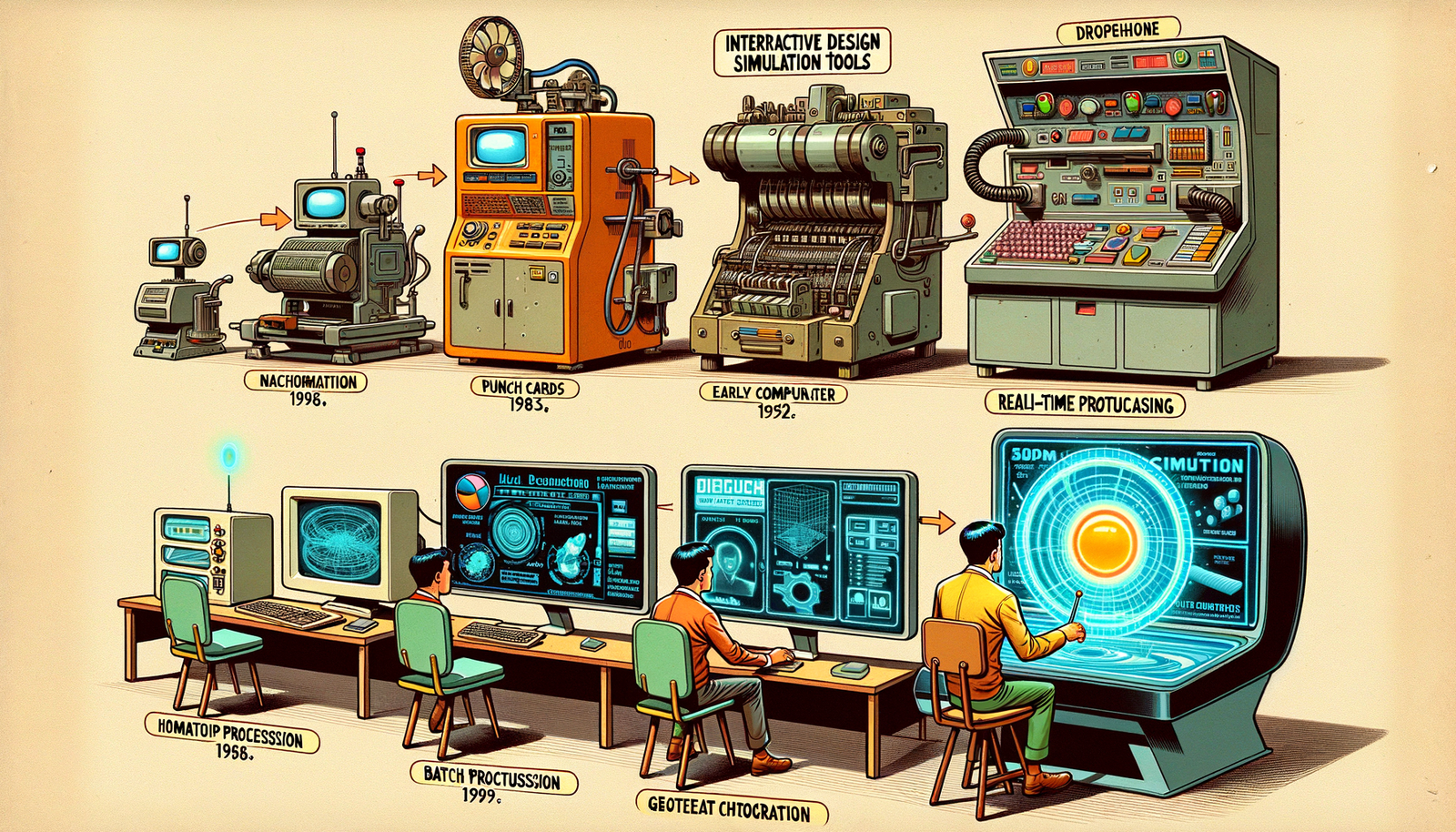Your Cart is Empty
Customer Testimonials
-
"Great customer service. The folks at Novedge were super helpful in navigating a somewhat complicated order including software upgrades and serial numbers in various stages of inactivity. They were friendly and helpful throughout the process.."
Ruben Ruckmark
"Quick & very helpful. We have been using Novedge for years and are very happy with their quick service when we need to make a purchase and excellent support resolving any issues."
Will Woodson
"Scott is the best. He reminds me about subscriptions dates, guides me in the correct direction for updates. He always responds promptly to me. He is literally the reason I continue to work with Novedge and will do so in the future."
Edward Mchugh
"Calvin Lok is “the man”. After my purchase of Sketchup 2021, he called me and provided step-by-step instructions to ease me through difficulties I was having with the setup of my new software."
Mike Borzage
Design Software History: Evolution of Interactive Design Simulation Tools: From Batch Processing to Real-Time Interaction
September 16, 2024 3 min read


Introduction
Interactive Design Simulation Tools have revolutionized the design industry, playing a pivotal role in transforming how engineers, architects, and creatives approach their work. These tools allow for the virtual testing and prototyping of designs, which significantly reduces the time and cost associated with physical prototyping. This article delves into the evolution of these tools, charting their journey from rudimentary computational methods to the sophisticated, real-time interactive systems we use today, and explores their impact on various fields such as engineering, architecture, and product design.
Early Developments in Simulation Tools
Foundational Technologies and Innovations
The journey of interactive design simulation tools began with the foundational technologies developed in the early 20th century. The work of pioneers such as John von Neumann and Alan Turing laid the groundwork for modern computational methods. Von Neumann's architecture, which proposed a system where data and programs are stored in memory, and Turing's theoretical framework for algorithms, provided the essential building blocks for subsequent advancements in computer science.
Initial Design Simulation Tools
The advent of Computer-Aided Design (CAD) software in the 1960s marked a significant milestone in the development of design simulation tools. These early CAD systems, such as ANSYS and NASTRAN, were primarily batch processing tools that allowed engineers to perform structural analysis and other simulations. Although these tools were groundbreaking, they faced several limitations, including the lack of real-time feedback and user-friendly interfaces. The processing power required for these simulations was substantial, often necessitating large mainframe computers which were not accessible to all.
Advances in Interactive Capabilities
Transition from Batch Processing to Real-Time Interaction
The late 20th and early 21st centuries witnessed a significant shift from batch processing to real-time interaction. This transition was driven by advances in hardware and software, which enabled the development of more user-friendly interfaces and real-time feedback loops. One of the key milestones in this period was the evolution of UI/UX design, which made simulation tools more accessible and easier to use. This shift allowed engineers and designers to interact with their simulations dynamically, making real-time adjustments and observing the immediate effects of those changes.
Integration of Advanced Technologies
The incorporation of GPU computing and parallel processing further revolutionized the performance of simulation tools. GPU computing, in particular, allowed for the handling of complex computations more efficiently, enabling more detailed and faster simulations. Parallel processing and distributed computing also played crucial roles in enhancing the capabilities of these tools, allowing for the simultaneous execution of multiple processes.
Key Software and Companies
Several companies emerged as leaders in the development of interactive design simulation tools. Dassault Systèmes, with its products CATIA and SolidWorks, became a dominant player in the market, offering comprehensive solutions for 3D design and simulation. Autodesk and Siemens also made significant contributions with their tools, providing robust platforms for various engineering and design applications. These companies' innovations have been instrumental in the widespread adoption and success of simulation tools across industries such as automotive and aerospace.
Contemporary Trends and Future Directions
Current Capabilities and Applications
Today, simulation tools have reached a level of sophistication that enables highly detailed and accurate simulations. Modern tools like Simulink and COMSOL Multiphysics offer extensive functionalities, including multi-physics simulations, which can model and analyze complex interactions between different physical phenomena. These tools are used in a wide range of applications, from engineering design to biomedical research, allowing for precise and reliable simulations.
Emerging Trends
The rise of cloud computing and Software as a Service (SaaS) models is one of the most significant emerging trends in the field of simulation tools. These models enable users to access powerful simulation capabilities without the need for extensive on-premises hardware, making these tools more accessible and scalable. Additionally, the integration of AI and machine learning into simulation tools is opening new possibilities for predictive simulations, allowing for more accurate forecasting and optimization of designs.
Future Prospects
Looking ahead, the potential advancements in virtual and augmented reality hold exciting prospects for the future of interactive design simulation tools. These technologies promise to provide immersive simulation experiences, allowing users to visualize and interact with their designs in a more intuitive and engaging manner. The continuous growth and development in this field are expected to drive further innovation in industry practices and design methodologies.
Conclusion
The evolution of interactive design simulation tools has been marked by significant technological advancements and innovations. From the early computational methods to the sophisticated, real-time interactive systems of today, these tools have transformed the design landscape, enabling more efficient and effective design processes. As we look to the future, the continuous growth and potential breakthroughs in this field promise to further enhance the capabilities and applications of simulation tools, driving innovation and progress in various industries.
Also in Design News

Revit Tip: Precise Property Boundaries and Site Component Placement in Revit
December 24, 2025 2 min read
Read MoreSubscribe
Sign up to get the latest on sales, new releases and more …




